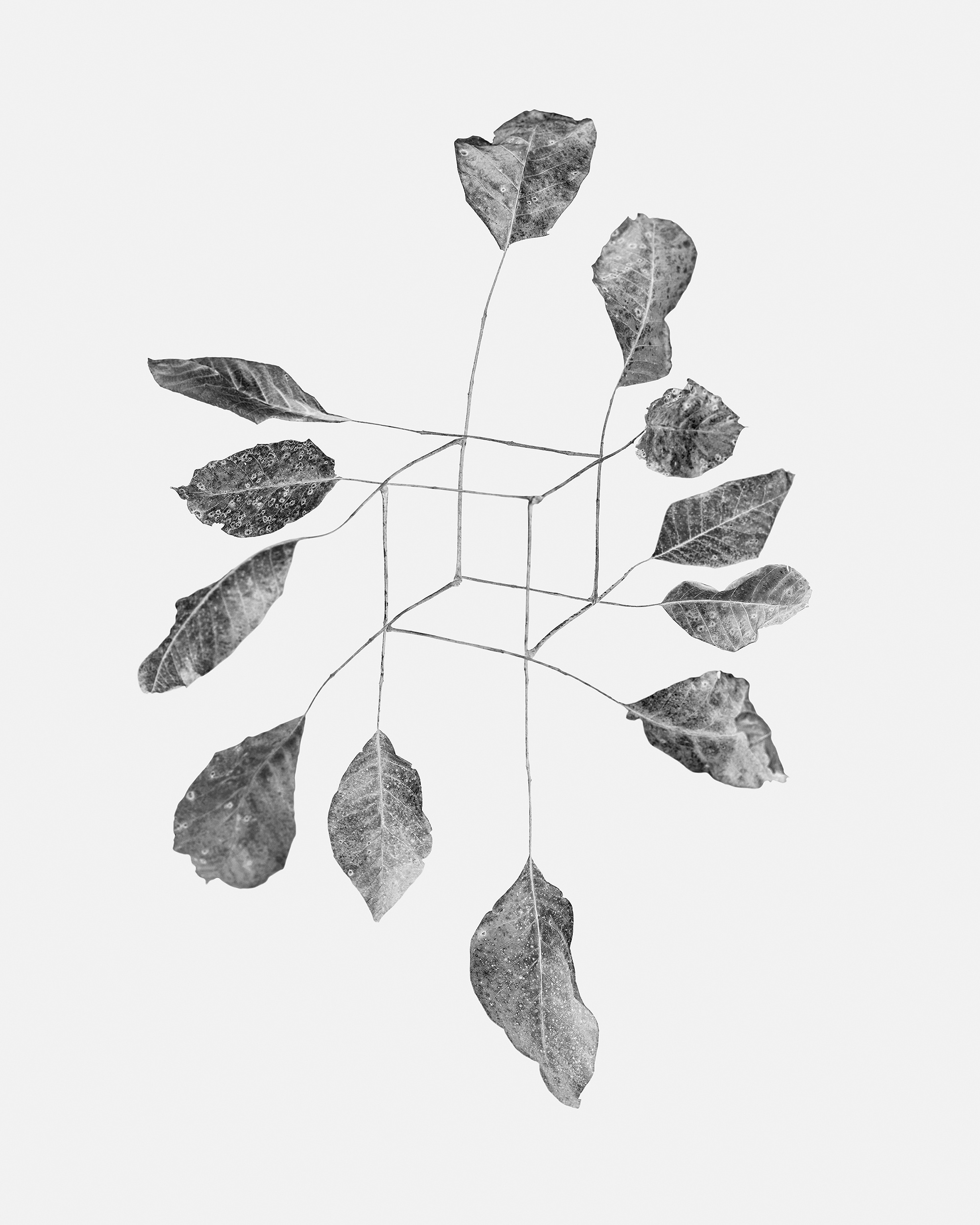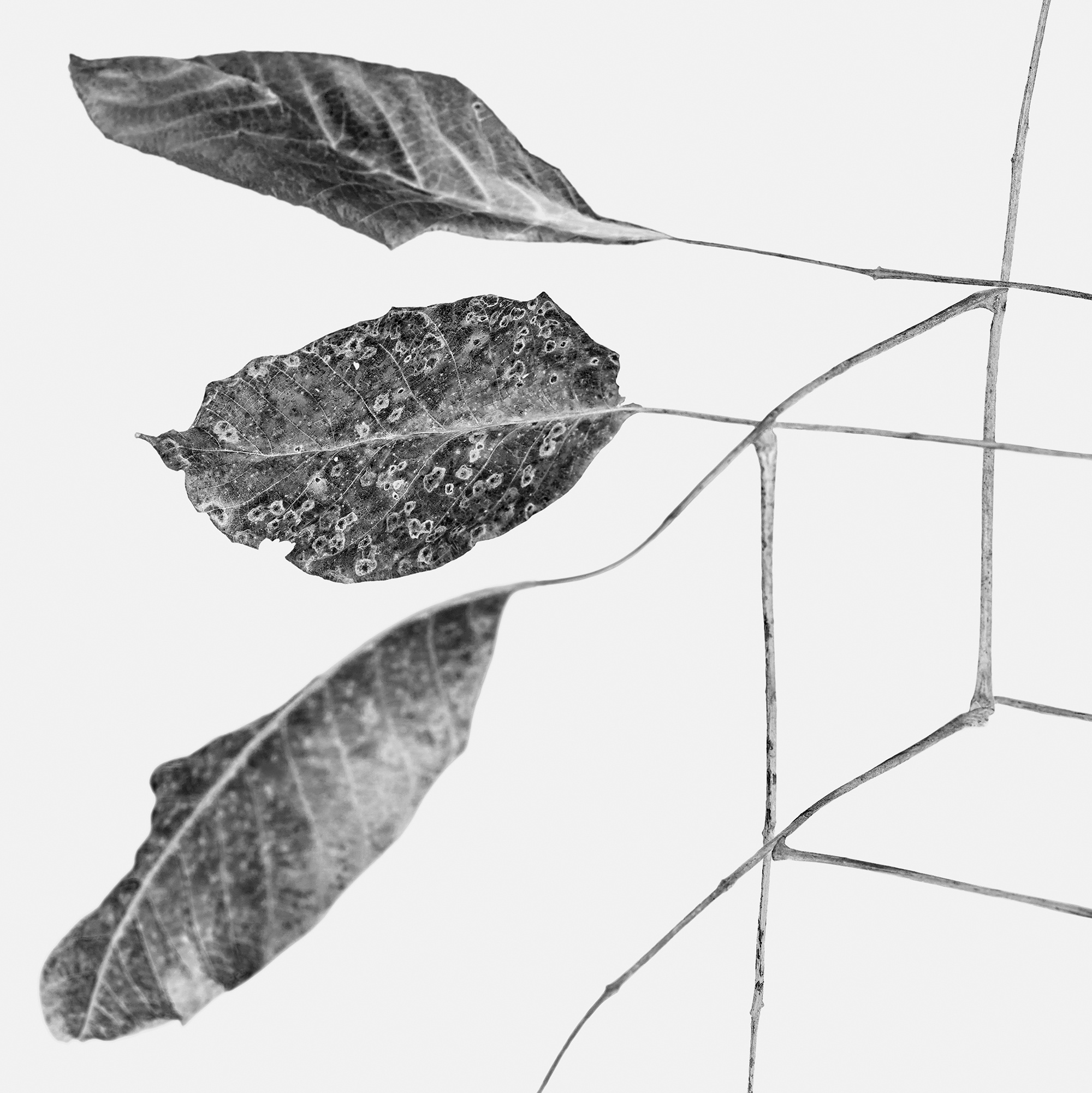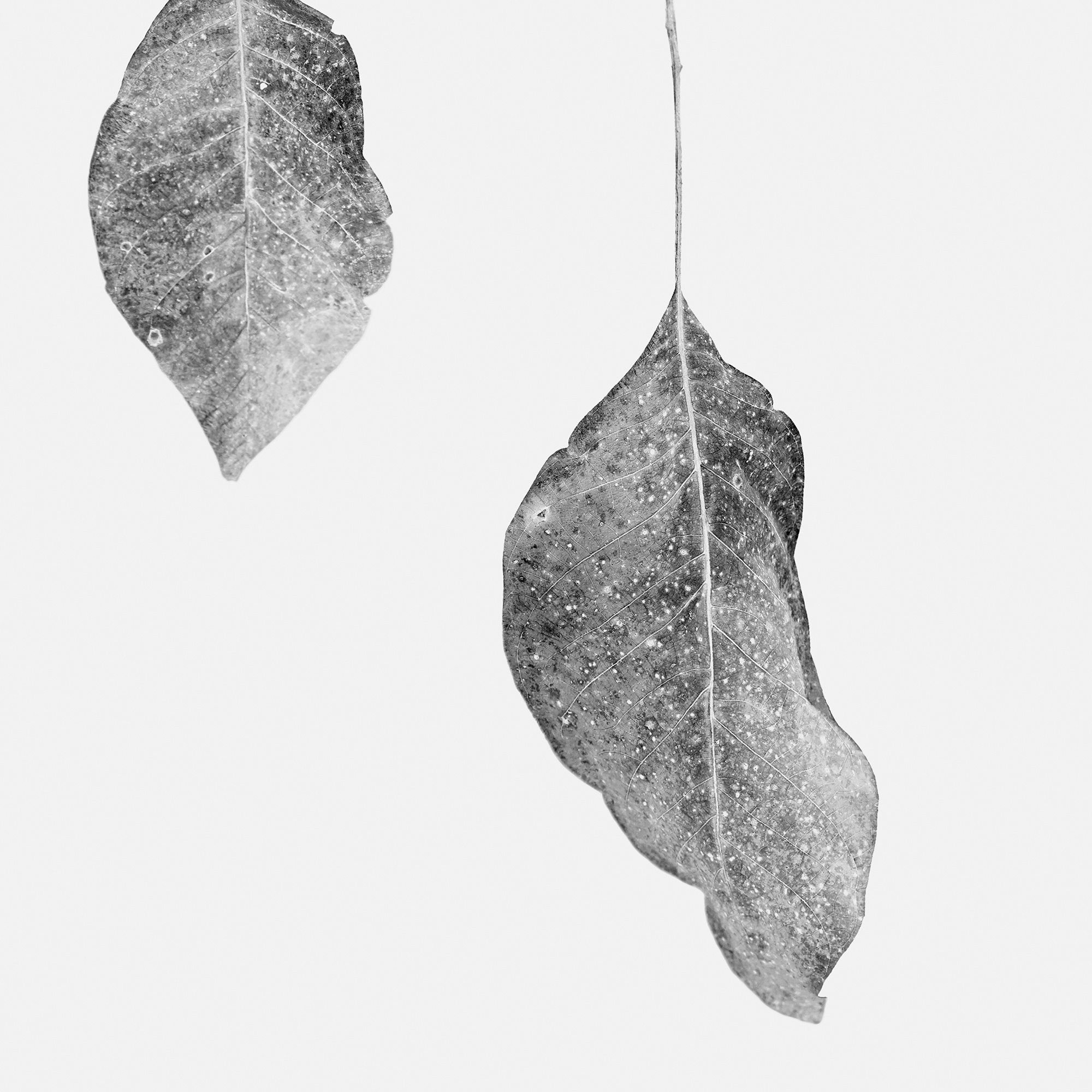Leaf
2019, 2021
![]()
Leaf (Deutzia Gracilis), 2019, photograph taken of a 19th century microscope slide, archival pigment print on Hahnemühle Photo Rag Baryta paper, 152.5 x 122 cm / 60 x 48 inches
In the summer of 1685 a diplomat, a philosopher and a princess were hunting for leaves in the Baroque palace garden of Hanover. Searching amidst the trees with dense foliage and pruned hedges, Carl August von Alvensleben had to agree with the philosopher Gottfried Wilhelm Leibniz and Princess Sophia that there were no two identical leaves. Leibniz, who attributed special significance even to the tiniest difference, regarded each leaf as a single, unrepeatable phenomenon, and concluded that with respect to its unique individuality every single leaf carried in itself the Universe’s infinite complexity, and thus, expressed the inexhaustible variety of nature. The story of the futile search for similarity basically puts a metaphysical principle into focus: there are no two entities which are identical in every respect. According to Leibniz, this fact is true for the smallest elements of nature and if time is also involved it can be stated that all the leaves that have ever existed, like those existing now or in the future, were all different from each other. Nature literally brings infinite forms into being continuously so every part however insignificant it may seem is unparalleled, i.e. has a unique identity in an ontological sense.
![]()
In the summer of 1685 a diplomat, a philosopher and a princess were hunting for leaves in the Baroque palace garden of Hanover. Searching amidst the trees with dense foliage and pruned hedges, Carl August von Alvensleben had to agree with the philosopher Gottfried Wilhelm Leibniz and Princess Sophia that there were no two identical leaves. Leibniz, who attributed special significance even to the tiniest difference, regarded each leaf as a single, unrepeatable phenomenon, and concluded that with respect to its unique individuality every single leaf carried in itself the Universe’s infinite complexity, and thus, expressed the inexhaustible variety of nature. The story of the futile search for similarity basically puts a metaphysical principle into focus: there are no two entities which are identical in every respect. According to Leibniz, this fact is true for the smallest elements of nature and if time is also involved it can be stated that all the leaves that have ever existed, like those existing now or in the future, were all different from each other. Nature literally brings infinite forms into being continuously so every part however insignificant it may seem is unparalleled, i.e. has a unique identity in an ontological sense.
![]()

Leaf (Deutzia Gracilis), 2019, detail, archival pigment print on Hahnemühle Photo Rag Baryta paper
Sphagnum Moss, 2021, photograph taken of a 19th century microscope slide, archival pigment print on Hahnemühle Photo Rag Baryta paper, 127 x 102 cm / 50 x 40 inches

Sphagnum Moss, 2021, detail, archival pigment print on Hahnemühle Photo Rag Baryta paper

Cube, 2019, archival pigment print on Hahnemühle Photo Rag Baryta, 127 x 102 cm / 50 x 40 inches

Cube, 2019, archival pigment print on Hahnemühle Photo Rag Baryta, detail


